Would you like to see this plane in-game?
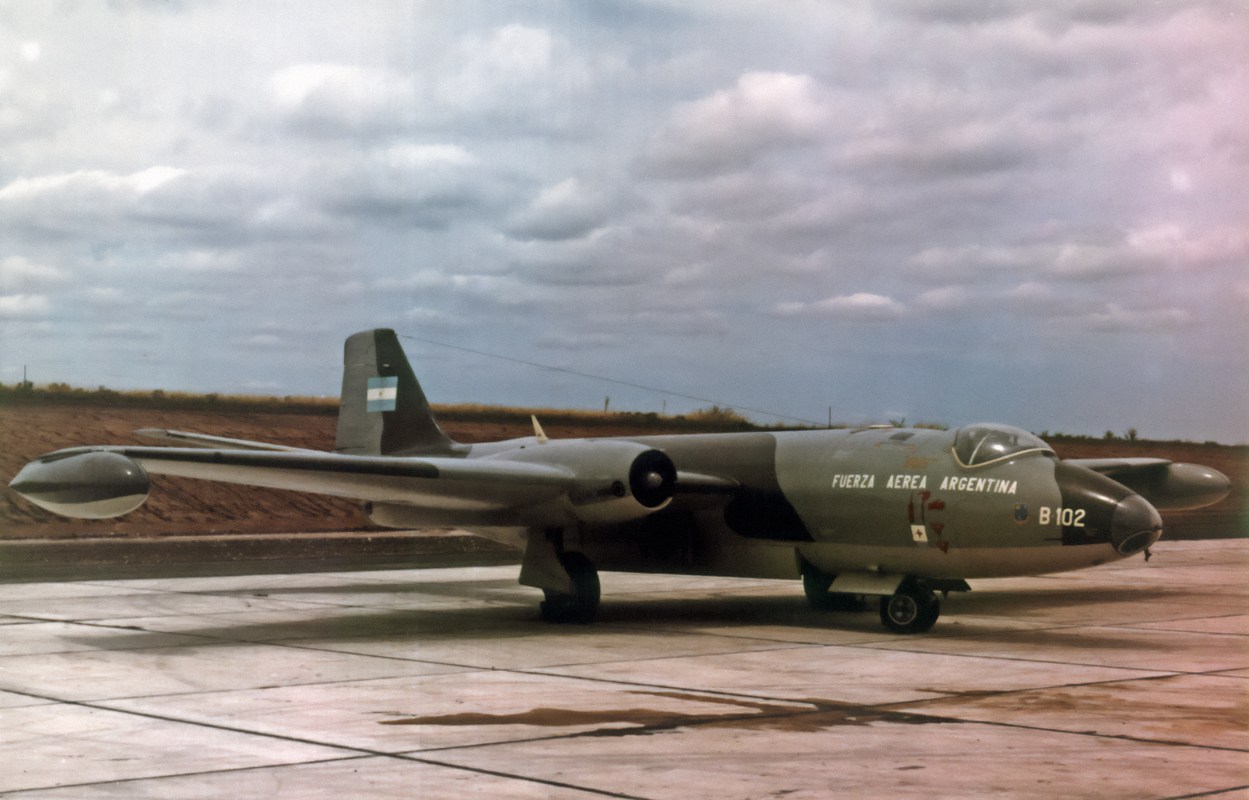
An Introduction:
Today suggestion will be about the Canberra Mk.62, the Argentine version of the B.2, this aircraft was acquired in the late 60s as a replacement of the ageing Avro Lancasters/Lincolns the FAA had kept flying for almost 20 years (since the 40s). The Canberras themselves would participate from various exercises and even be present in the 1978 Beagle crisis, but their main noteworthy service was in the 1982 conflict with the Uk over the Malvinas islands, where the Canberras undertook various missions against both land and sea targets. Despite being almost identical to the B.2 we have in game, there are a few distinguishable modifications the Mk.62 had that set it apart, mainly its ability to use both Chaff and Flares, optional radar and various choices in ordinance (spanish/russian bombs).
History and Service:
The story of the Canberras of the Argentine air force starts in the 60s, the FAA had expressed interest on the bomber and tried multiple times to purchase it, although the British government dismissed the letters of intent sent by the Argentine government, an agreement would be reached in 1969 were a formal purchase was done, x10 B2s and x2 T4s. At the same time, work began to adequate crews to this new weapon system, this saw pilots been previously formed on Gloster Meteors and Morane Saulnier 760s, Navigators on C-130, etc. This crew was later sent to Britain to be properly trained on the Canberra. Another small crew was sent to Peru, who operated the plane and was keen to receive two crews for their training.
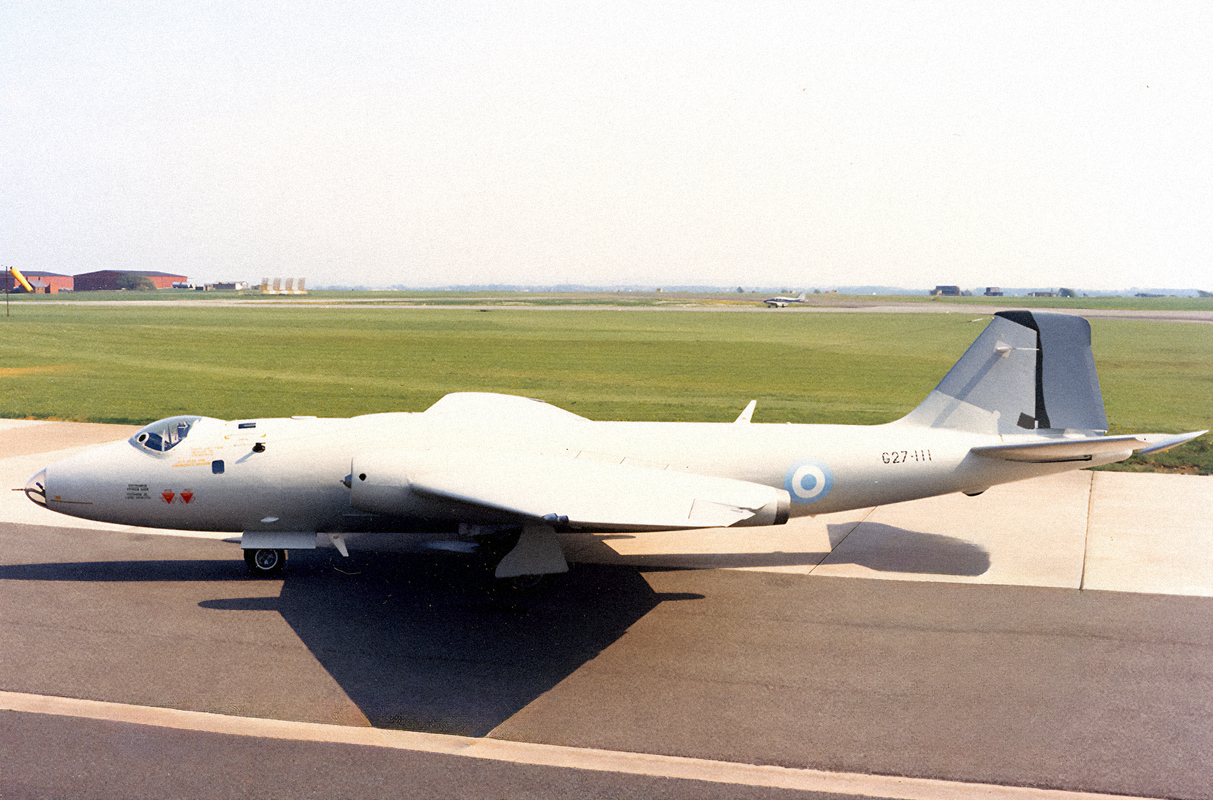
In Britain undergoing preparations
As soon as the aircraft were ready, and the crews finished their training, they were flown from Britain to Argentina, this required the presence of a C-130 Hercules as a support aircraft. The first 3 aircraft to be sent were B-101, B-102 & B-103, their trip amounted almost 49 hours since they departed from Warton to the 2nd Aerial Brigade in Parana (or to another base in Resistencia). The remaining aircraft would follow, with the last units arriving in 1971. As the Aircraft arrived the 1st Bombers group was officially created, with this the 2nd Brigade was prepared to “house” the Canberras, this meant things like, reinforcing and enlarging the runway, adding a contention net for emergencies, new lights for night operations…etc.

Example of a Canberra being caught by the Safety net
During the 70s the squadron consolidated its capabilities and participated on various exercises, visited other units and even participated on parades outside Argentina. Towards the end of the decade, tensions arise with Chile over border limitations (Beagle Crisis), all armed forces made deployments to the south, the Canberras were deployed in the Naval Base Comandante Espora located in Bahia Blanca, they shared the base with the Navy Skyhawks. In the end, thanks to the pope’s intervention, the conflict never materialized.
Canberra “Pelicano”
To expand the aircraft’s operational capacity, at the end of 1981, the technical Group 2 presented a project to equip the Canberra with an RDR MET NAV 1400 BENDIX radar. After a quick study and seeing the experiences of the USAF B-57G Aircraft that operated a similar radar and covered by a fiberglass radome, the aircraft that would be modified were selected. Those chosen were four BMk62 models; the B-101, B-102, B-104 and B-107, for their modification. For this, a Commission was formed made up of officers, non-commissioned officers and Civilians from Technical Group 2 to go to the Rio Cuarto Material Area, the FMA, and together with them, Engineer Captain Roque Hauser, who served as flight crew, along to STAGE III pilots and navigators assigned to these test flights. The screen was located in the Navigator’s position, who operated it.
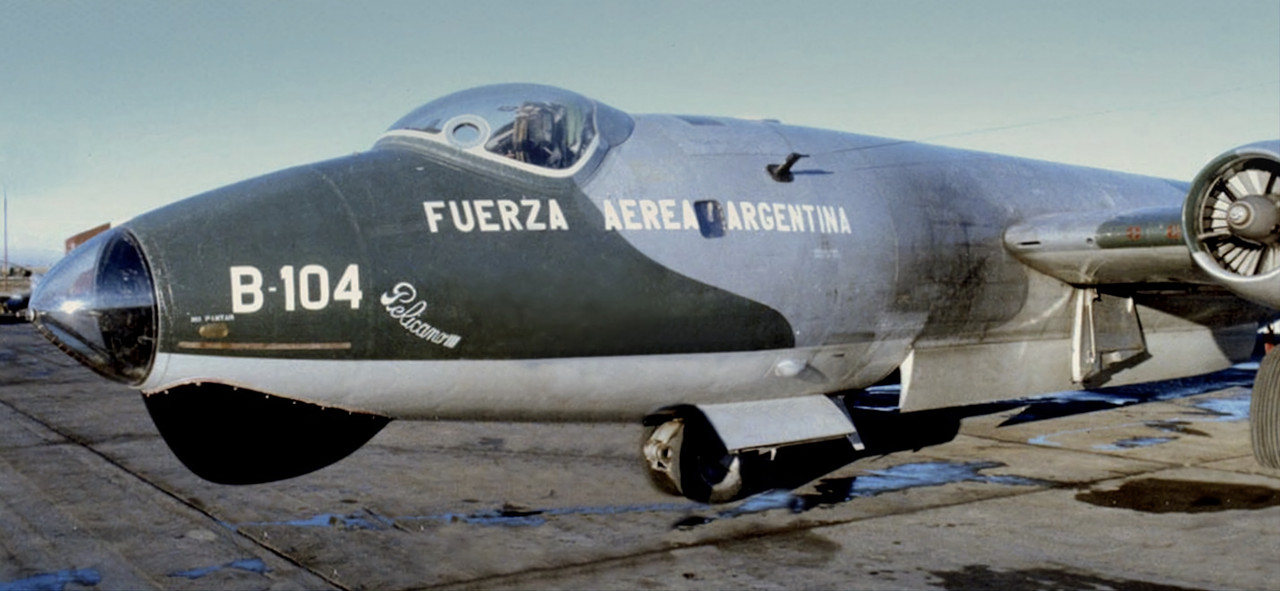
The B-104 in the “Pelicano” Configuration with the under-nose radome
During flights with the PELICANO configuration, the pilots reported that they had hyper-sustainability, which tended for the plane to rotate before the indicated rotation speed, with which the pilot anticipated and waited for it, making a gentle correction of the steering wheel. forward, until reaching the optimal safety speed. It was also noted that, in asymmetric conditions with a single engine, a strong yaw to the left was produced, which, if not anticipated by the pilot, made the control of the airplane very complicated. During the landing phase and with flaps down, it was also evaluated that an engine stall would produce a dangerous approach.
Several flights were carried out with the B101 in Rio IV and the FMA, with CEV personnel at the beginning of 1982. It was named PELICANO, due to the shape of the radome, which was similar to the crop of a Pelican bird. For them, the Canberra B-101 was designated Pelicano I, the B-102 Pelicano II, the B-104 Pelicano III and the B107, which would be Pelicano IV, was never modified. After the Malvinas Conflict ended, the RDR 1400 radars were modified and installed on the Canberra B-102 and B104.
Conflict
The 2nd of April generated a surprise on the 2nd Brigade, with the news of the recuperation of the Malvinas Islands it was decided to deploy the Canberras in the Patagonia along with support units for them, this were logistical aircraft (Guarani II, DC-3, Boeing 707, etc.). All aircraft were immediately readied to be sent south, with the exception B-107 that had experienced an engine fire and couldn’t be fixed on time. On April 10th after a ceremony all Canberras departed south for the Navy Base “Almirante Zar” in Trelew, Chutbut Province.

A Canberra At Trelew during the conflict
During April, the Squadron dedicated itself to preparing the aircraft and its personnel. Various reconnaissance, photographic and patrols were performed over the islands, taking advantage of the capabilities of the new RDR 1400 Radar of the Canberra B-101 Pelícano. Its worth noting that since the threat of Radar and IR missiles was very much present in the conflict, the squadron improvised Flare/Chaff launchers for their aircraft thing that came in handy during the conflict.
A little-known fact revealed by one of the protagonists, bombing officer Captain García Puebla, pilot and squad leader: While check flights were carried out to launch bombs on islets, the sea and some abandoned structures, it was noted that the Mk17 bombs were not suitable for naval targets. A very extreme idea was tested, thinking about the aircraft’s performance, speed and vulnerability to naval targets, speculating that Group 2 would indeed be sent to attack ships.
It is in this situation that the oldest and most knowledgeable crew members of the plane saw that it would be quite hard, and some other solution would be needed, one of the ideas to neutralize a naval objective was to adapt a Navy torpedo to a Canberra underwing support, thing that never passed from testing, since the torpedo self destruct against the water due to the speed. Another proposal was to fit the Canberras with Exocet missiles, thing that would have been plausible but never materialized
The First mission came on April 26th, the Canberras would be sent to strike the British ships present in the Georgias islands, despite the trip being done without issues, bad weather conditions forced the Canberras to return.
On May 1st during as the first engagements between British and Argentine Forces started, the Canberras were ordered to attack, on this mission the first 3 aircraft to be sent were intercepted by British Sea Harriers, despite the Canberras launching flares and Chaff, B-110 was shot down, its occupants ejected but lost their lives, as the ship that was supposed to rescue them was attacked by British helicopters. The two remaining aircraft managed to escape unharmed after launching flares and evading another missile.
As British forces landed in San Carlos, the Canberras changed their approach, from anti-shipping missions to attacking land targets, approaching at low altitude and only raising at the last moment to release all 1000lb bombs. On May 27th the first mission where this bombing profile was done, B-101 (Pelicano) and B-104 were assigned to do it, each carrying x4 1000lb Mk.17 bombs with parachute tails attacked San Carlos, the bombs landed on some positions of the British forces, this created some confusion, as British intelligence had the FAA did not operate during the night…more comically, as Lt. Lucero (A-4 pilot who ejected and was captured by the British) was being questioned, he confirmed that the FAA did not had the means to attack during the night, as the interrogation went on, the bombs launched by the Canberras exploded in the positions near the hospital were he was being interrogated.
Following this successful attack, the Canberra squadron would perform other missions in the same profile over Mount Kent following the British advance. In one of this missions, B-101 was close to being intercepted by a Sea Harrier, but the British aircraft was never able to find the bomber, on its return, one of the engines suffered a stoppage and the aircraft enter an uncontrollable spin over the sea, despite the situation the pilot managed to recover it and fly with one engine to the continent, and save the aircraft.
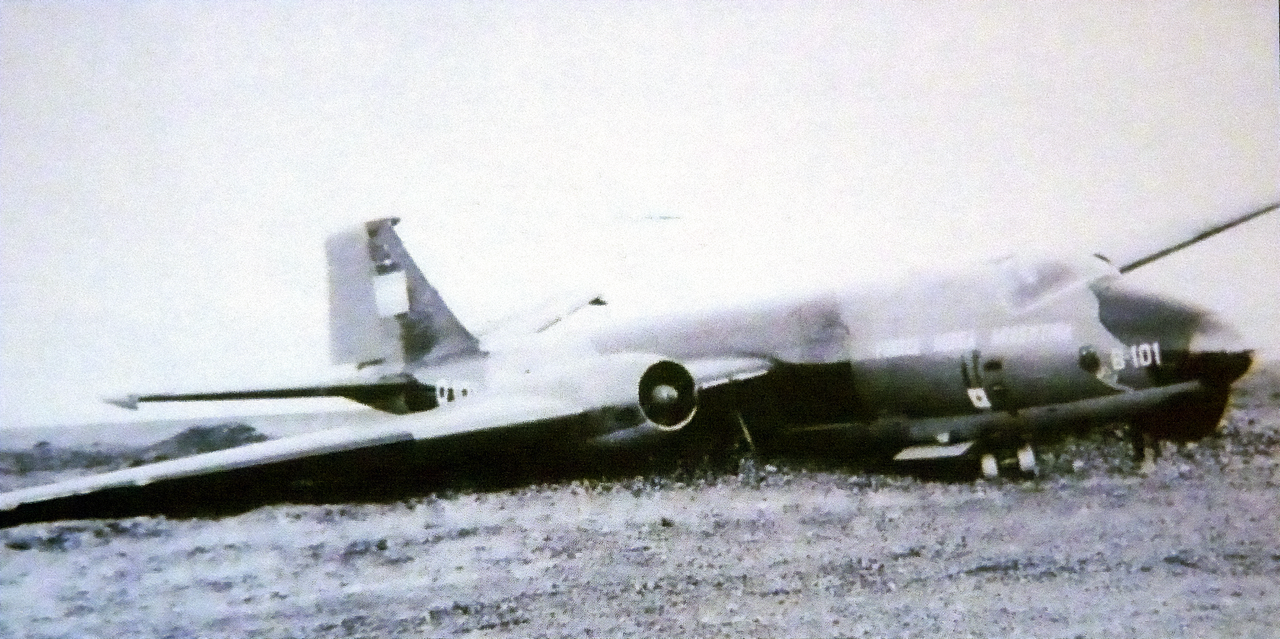
Pictured B-101 after returning from its mission with only one engine and going off the runway
On June 8th, the Canberras would again try attacking naval targets, this time it was the petroleum tanker Hercules, according to Intelligence this ship was carrying processed fuel for the British task force, thus it was intercepted by a C-130 and later the Canberras, who eventually bombed it, the bombs did not explode on impact. The ship, with active bombs inside would be anchor in Brazil and sunk with its cargo, even after both Argentine and Brazilian governments offered to deactivate the bombs.
Night missions would continue until the end of the conflict on the islands, the last mission on the 13th of June was performed by B-108 and B-109, escorted by Mirage IIIEAs. Both aircraft closed in under the guidance of the Argentine radar on the islands, they bombed the zone where the command post of the chief of land forces, General Jeremy Moore, resided (The A-4s would also perform an attack like this).

B-109 on flight, the Chaff/Flare launcher can be seen
On their escape a pair of Sea Dart missiles were launched at the Canberras, the aircraft managed to evade the first missile, but the second impacted B-108, the pilot managed to eject and was captured, the navigator wasn’t able to eject since the seat was damaged after the explosion, B-108 was the last aircraft lost by the Argentine Air Force during the conflict. As hostilities ceased, the Canberras returned to Parana.
Its worth recognizing the help provided to the squadron by other nations who donated wingtip fuel tanks, spares and even bombs, Russian and Spanish bombs were provided and tested.
Postwar and last years.
After the war the Canberras would continue serving, despite the British embargo, their logistical chain was ensured triangulating via other nations who operated the aircraft to provide spares. With the Pelicano modification dropped after an accident, the Canberras continued operating in their 82’ configuration until 2000.
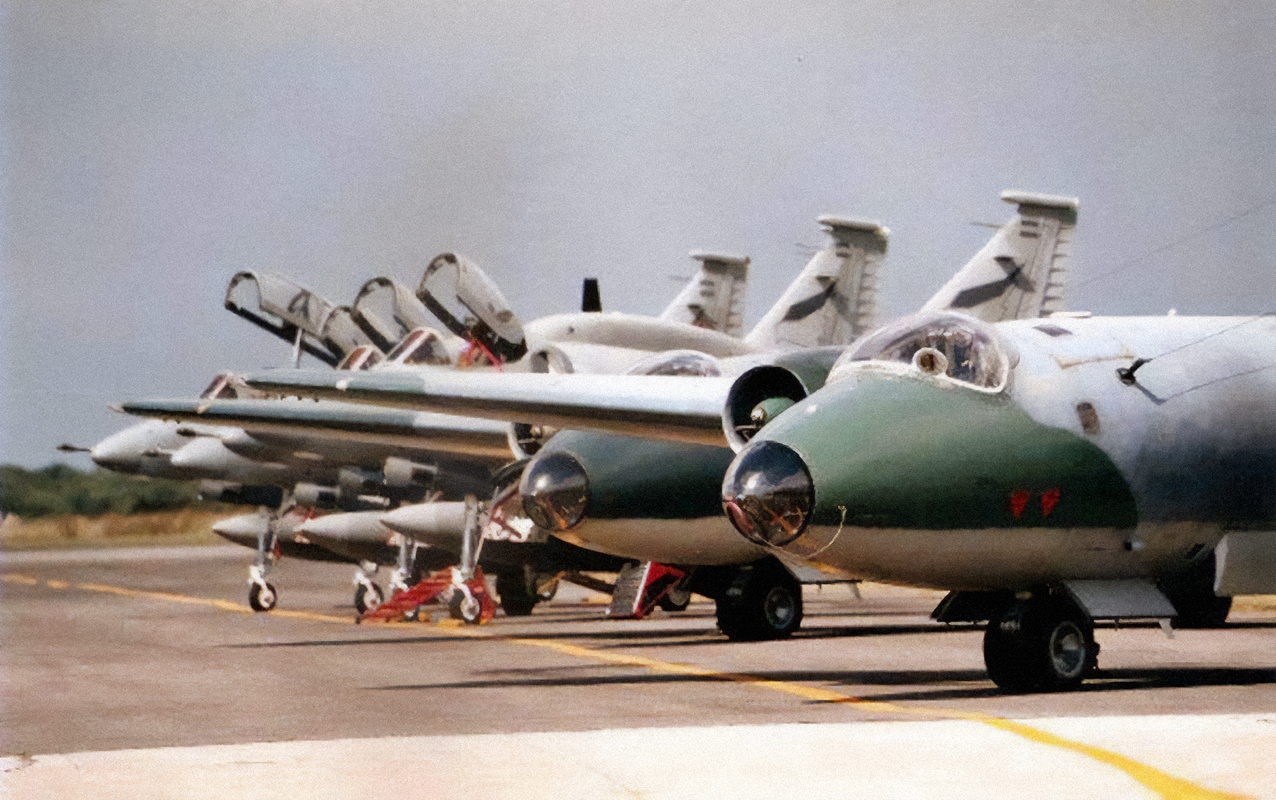
Pictured along side the A-4ARs during the late 90s
Today all Surviving Canberras reside as gate Guardians or in Museums, with B-101 having been fully restored and resting at the ESFA in Cordoba.

B-101 restored at the ESFA (Air Force NCO school)
Technical specifications:
Spoiler
Crew: 1
Dimensions:
Length: 19.65 m
Wingspan: 19.50 m
Height: 4.77 m
Wing Surface: 89.19 m²
Weight:
Empty weight: 10485 kg
Max takeoff weight: 21790 kg
Engine: x2 Rolls-Royce Avon 101
Power: 6,600 Lbf of thrust
Performance:
Max speed: 925 Km/h (at 10500m)/830 Km/h at sea level
Service ceiling: 18000 m
Climb-rate: 186 m/s
Range: 1250 Km (Combat)
Armament:
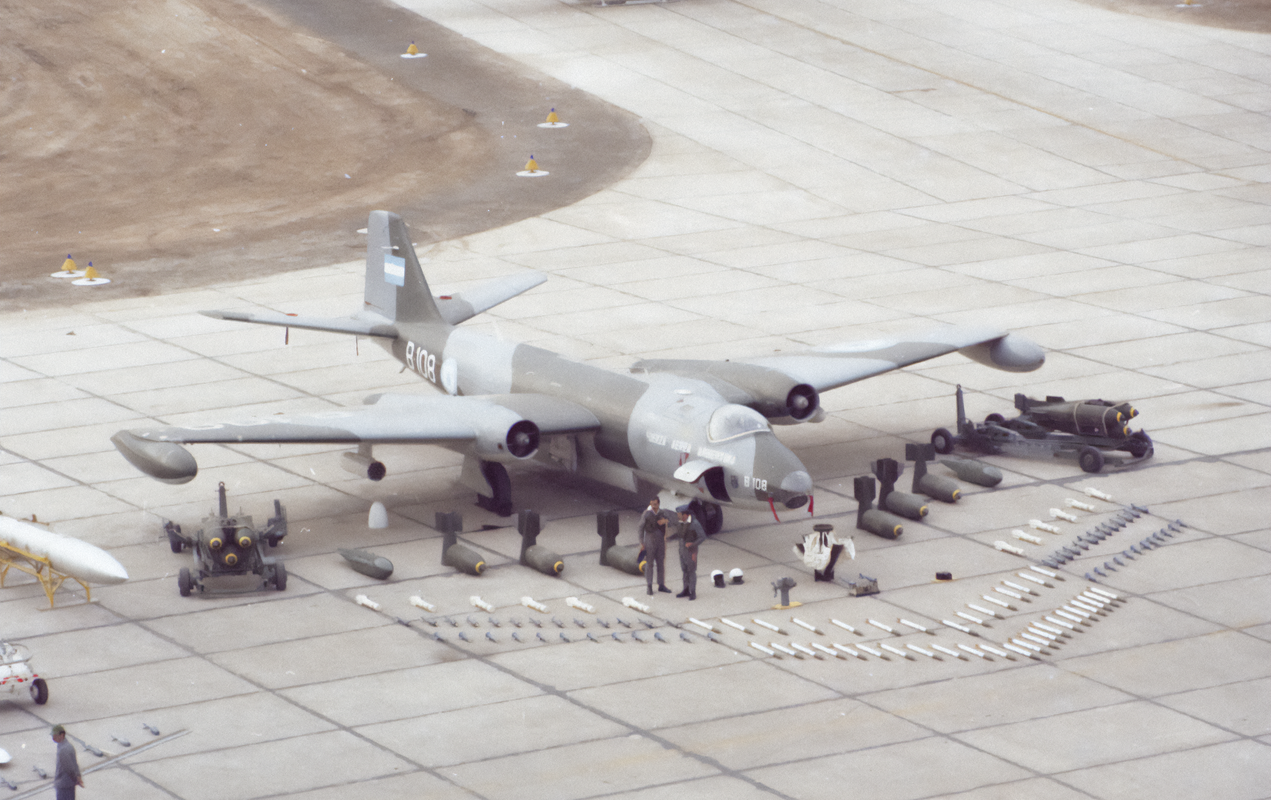
^Using this image from the 1978 Exercise we can see some of the Armament it could carry.
*1000lb Mk.17 Bombs
*LAU-60 rocket pods (x19 FFAR rockets)

^SNEB rocket pods (this was fitted in the Uk, there is no much info if some of them made it into argentina)
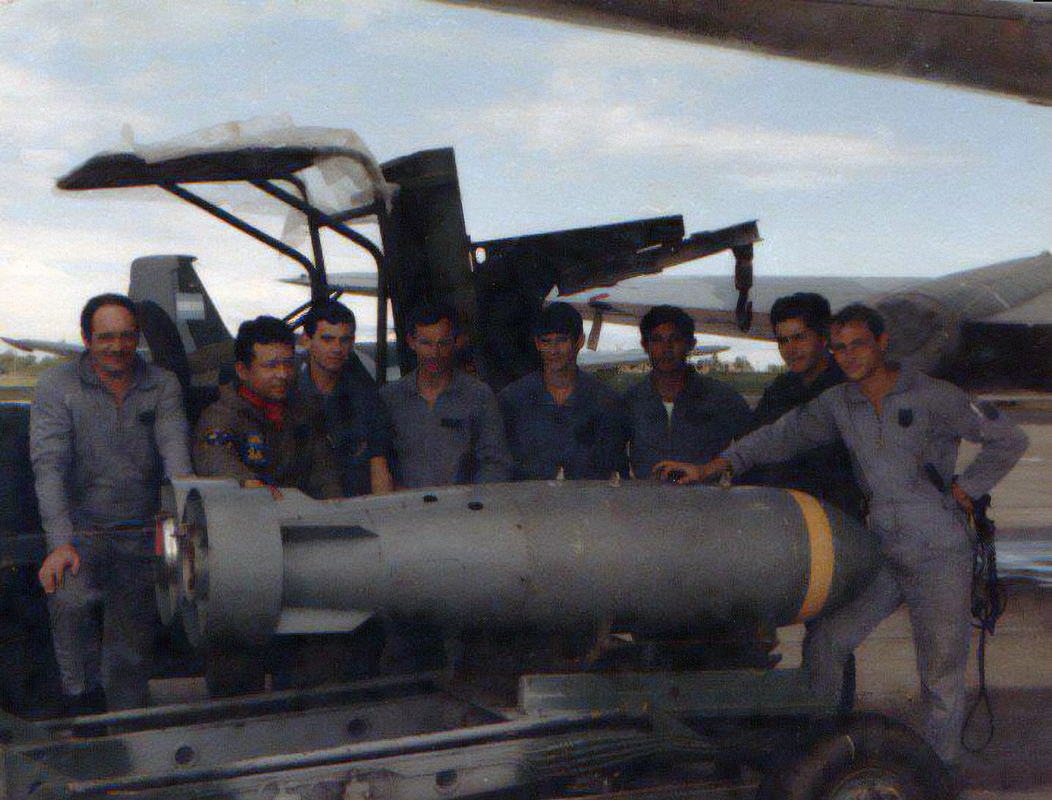
^Spanish EXPAL Bombs
(If more images with armament come ill update this)
For countermeasures the Canberras had a separated space in the belly after the bomb-bay that for them, this were improvised cartridges made by the technicians of the Grupo 2.
Photos:
Spoiler
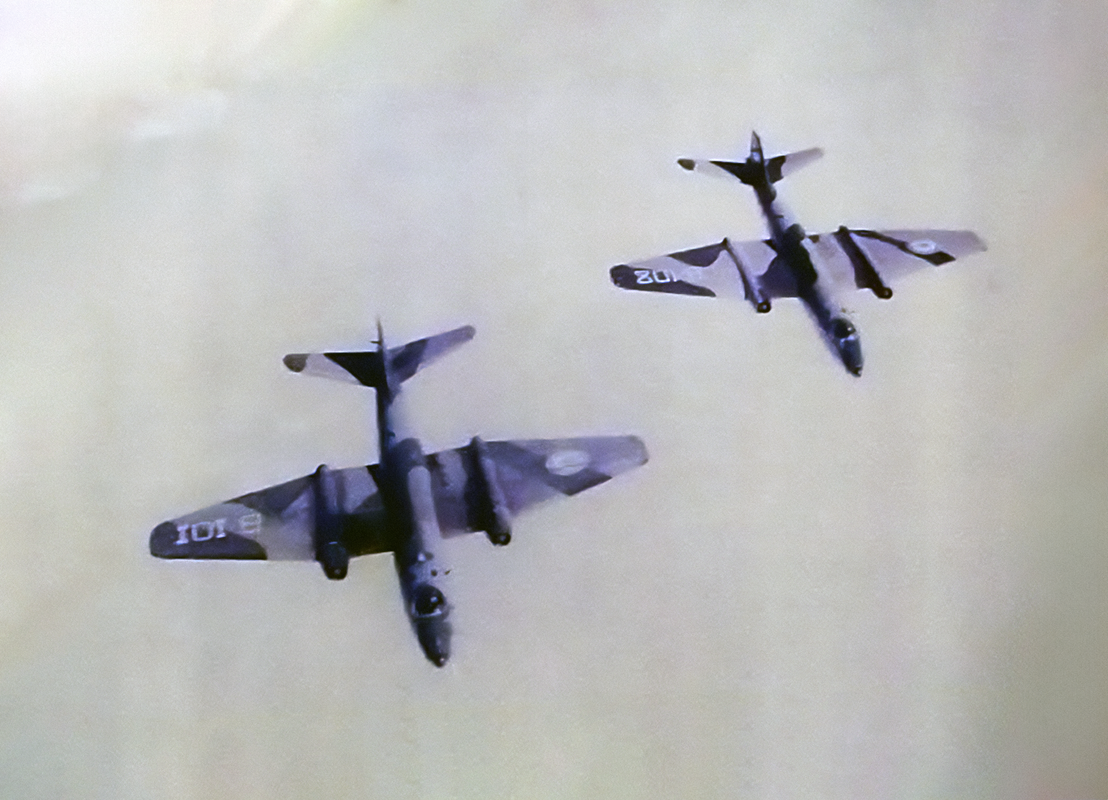

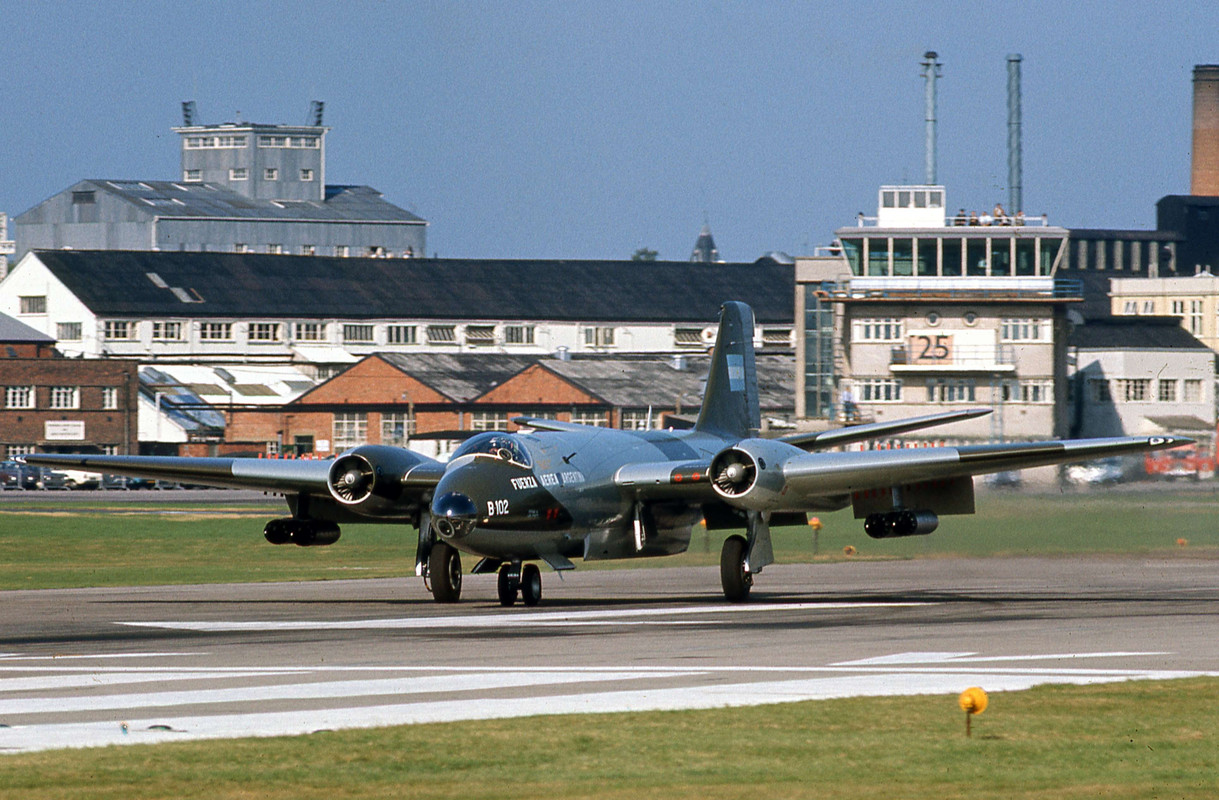
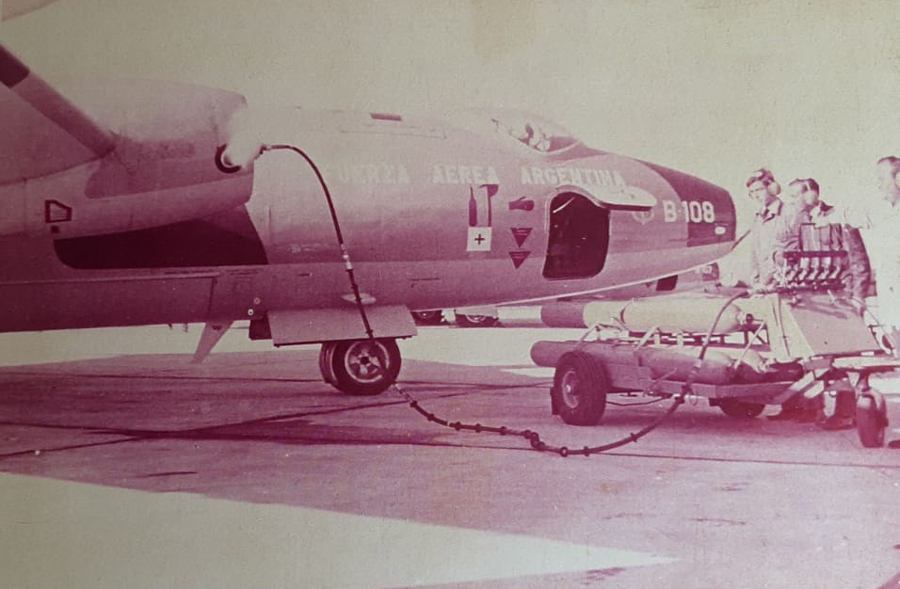

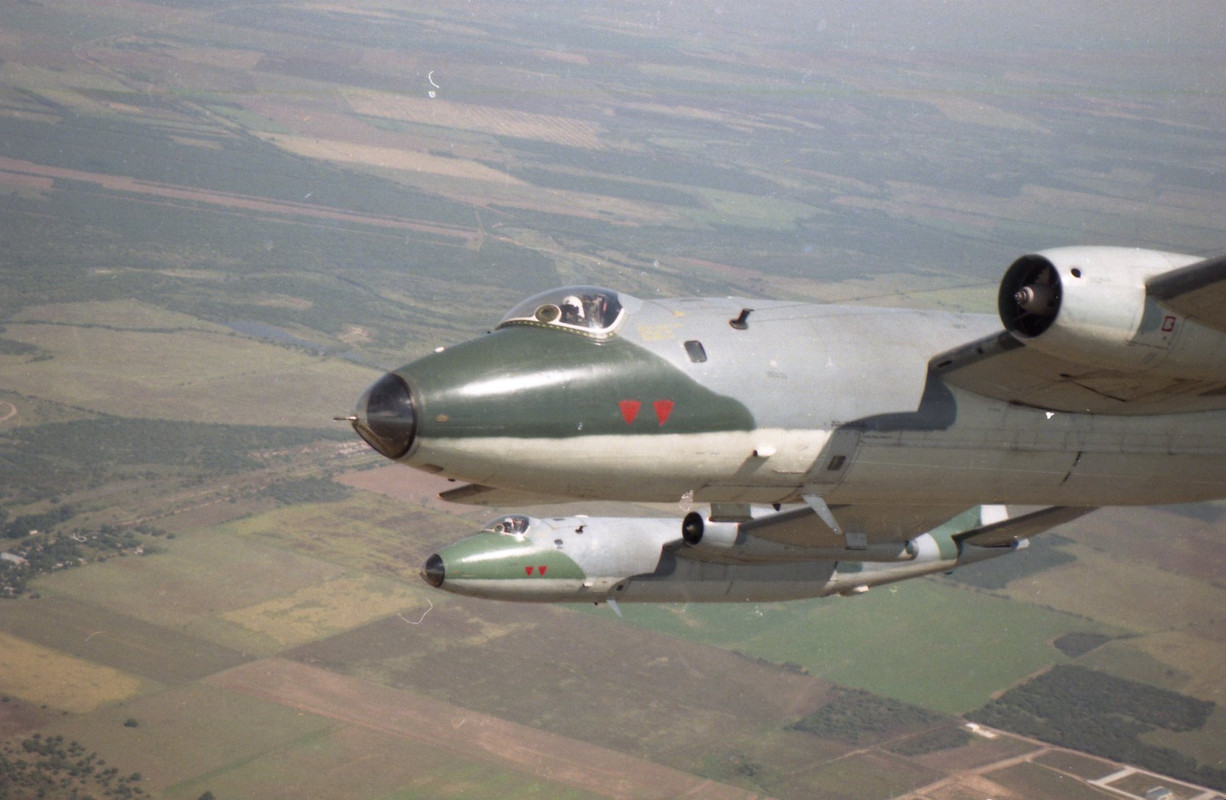
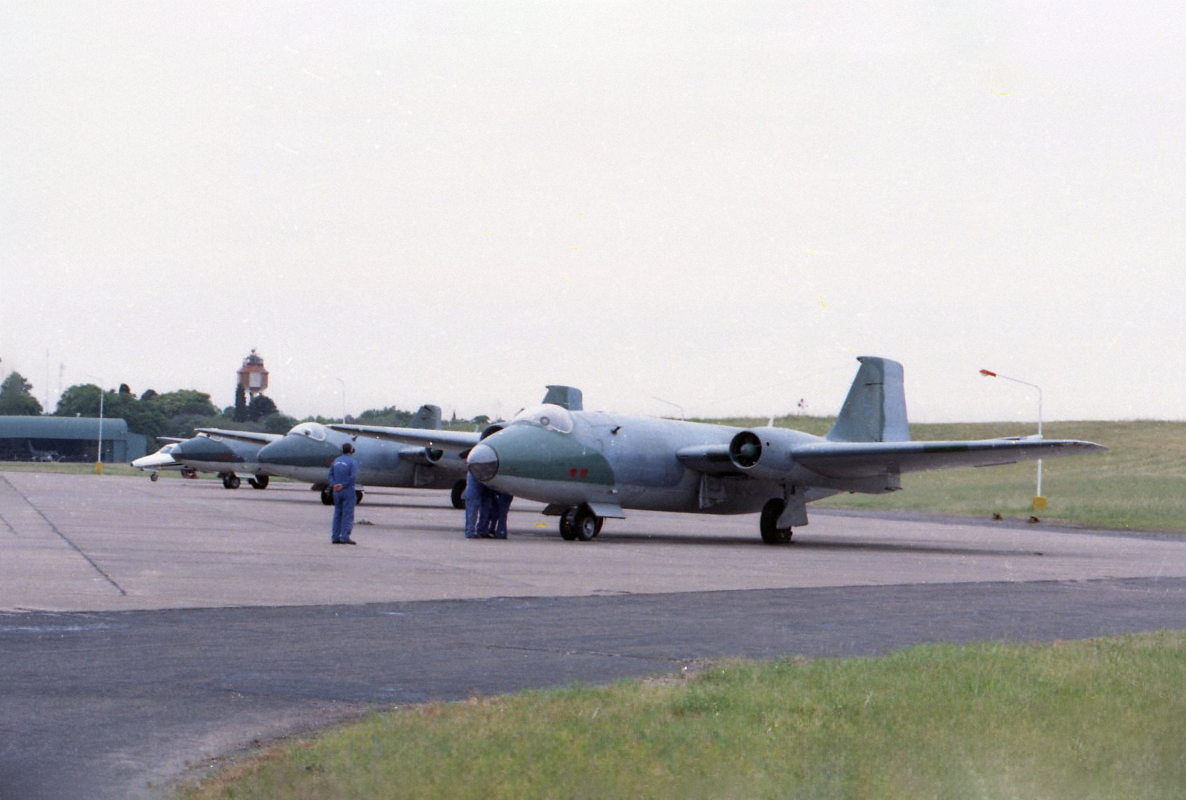

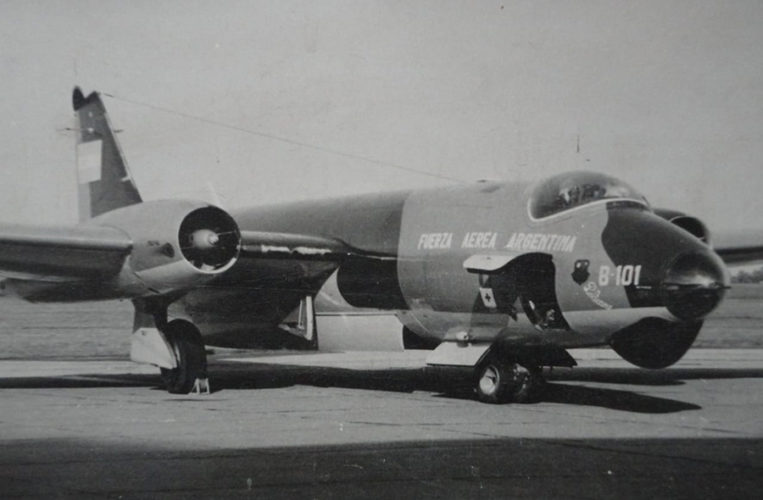


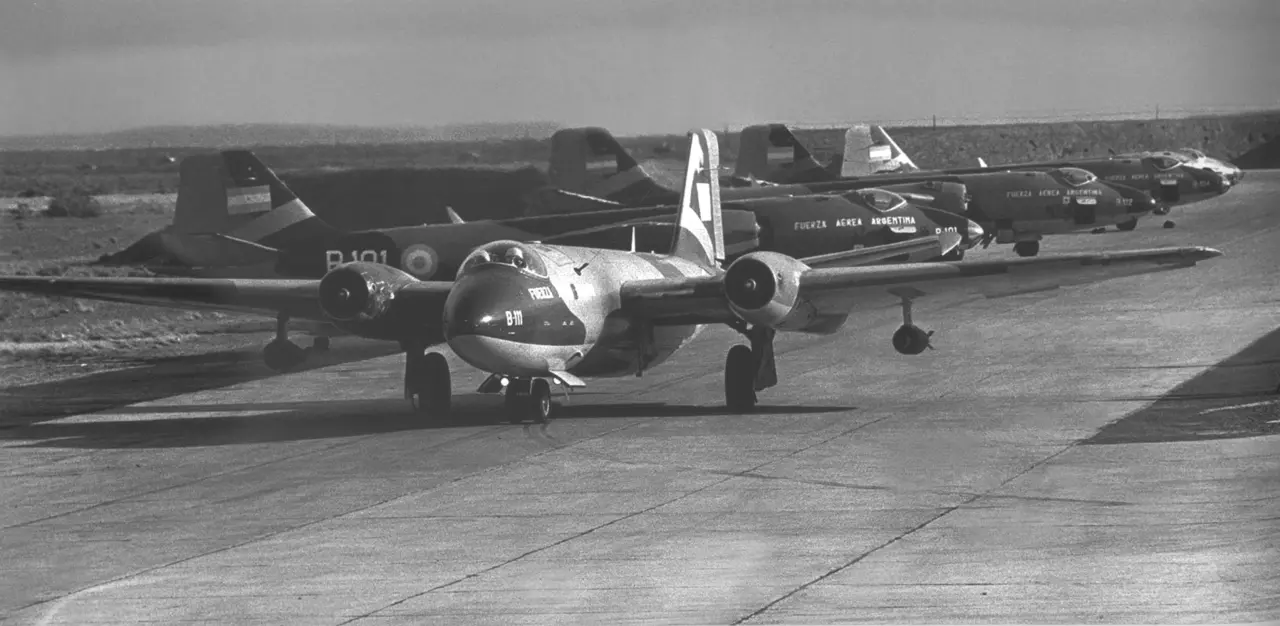
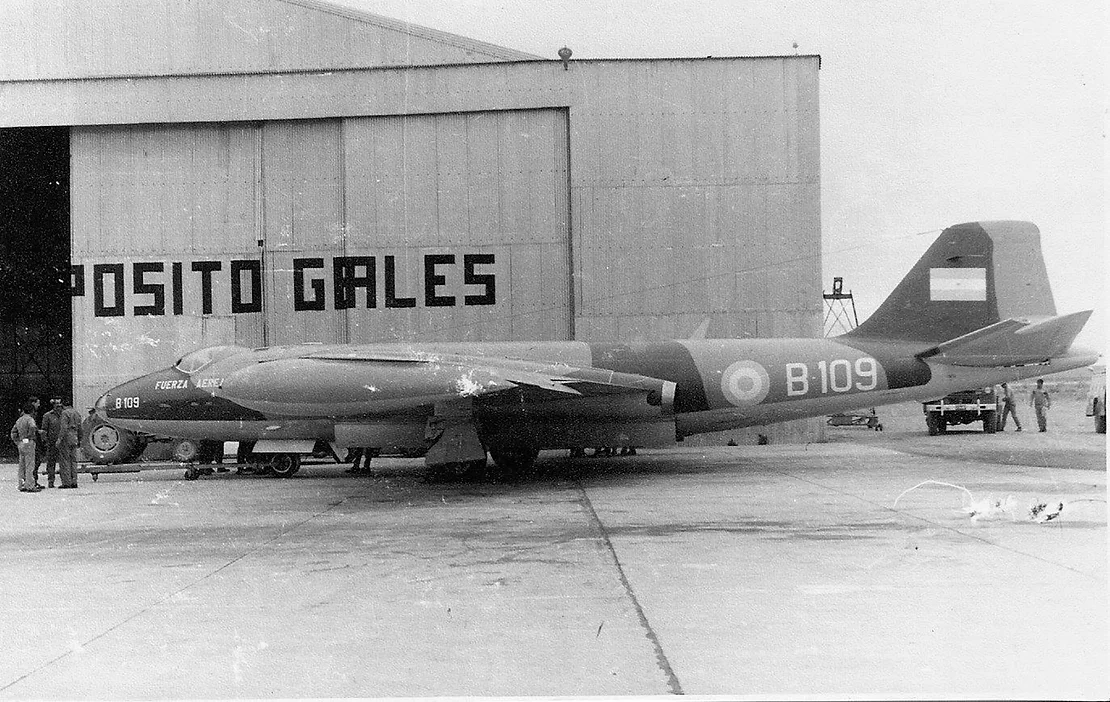
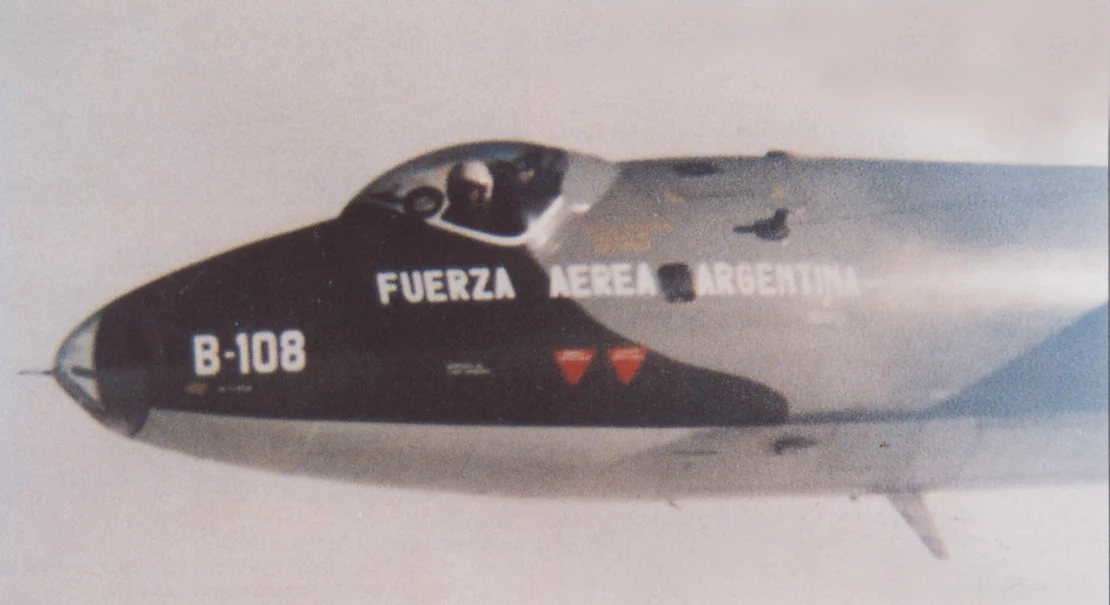

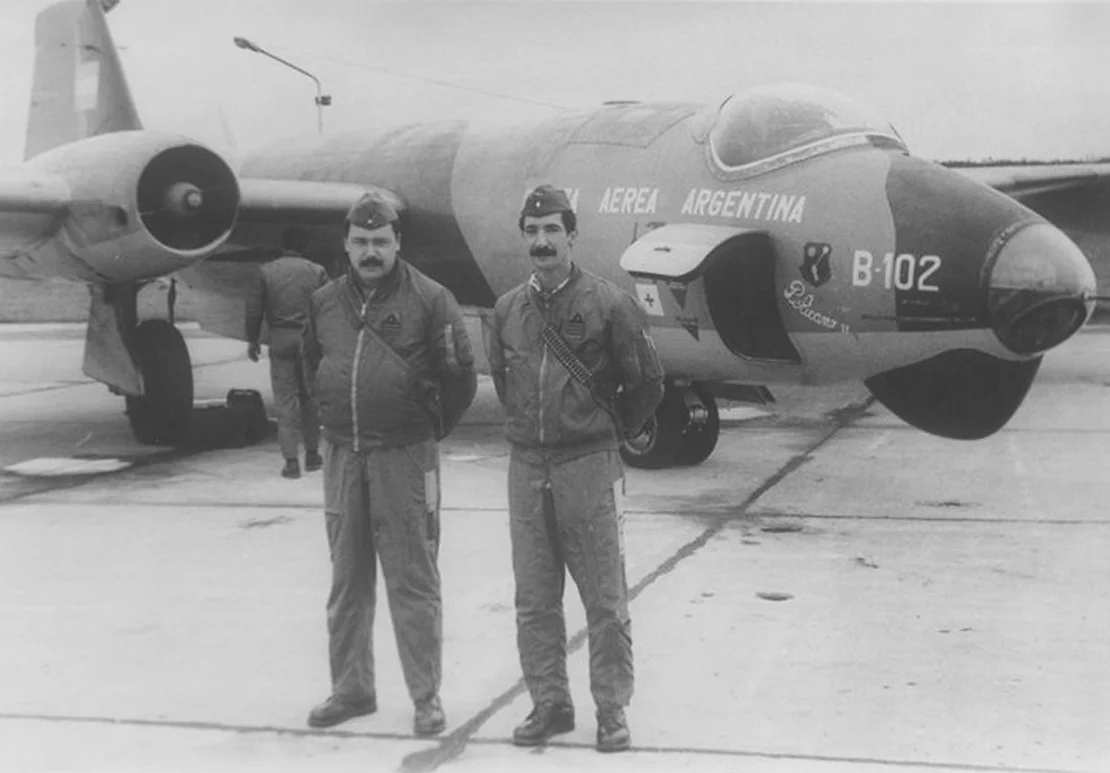
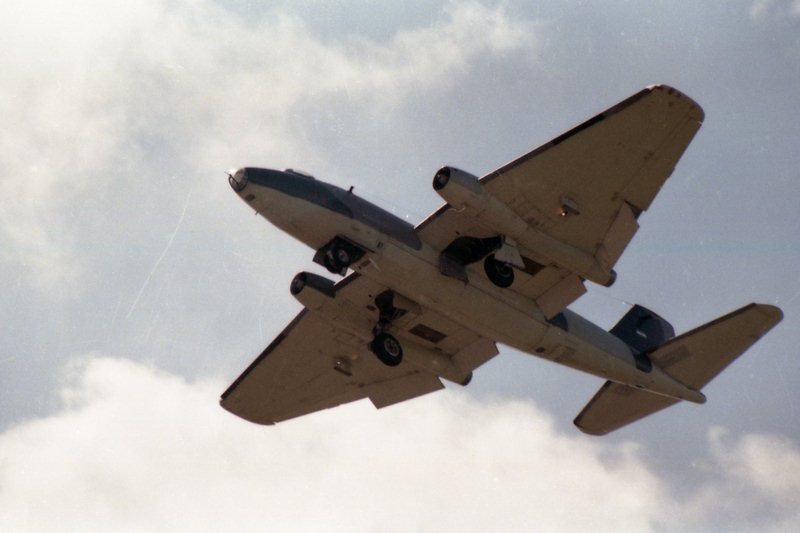
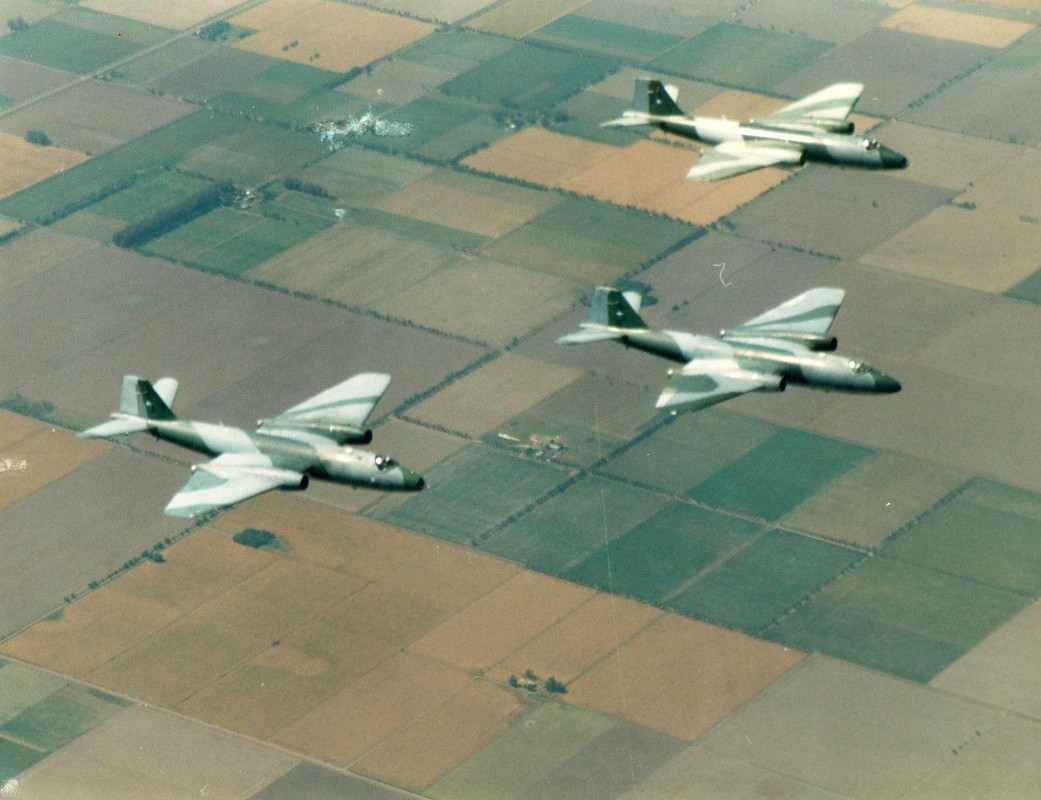
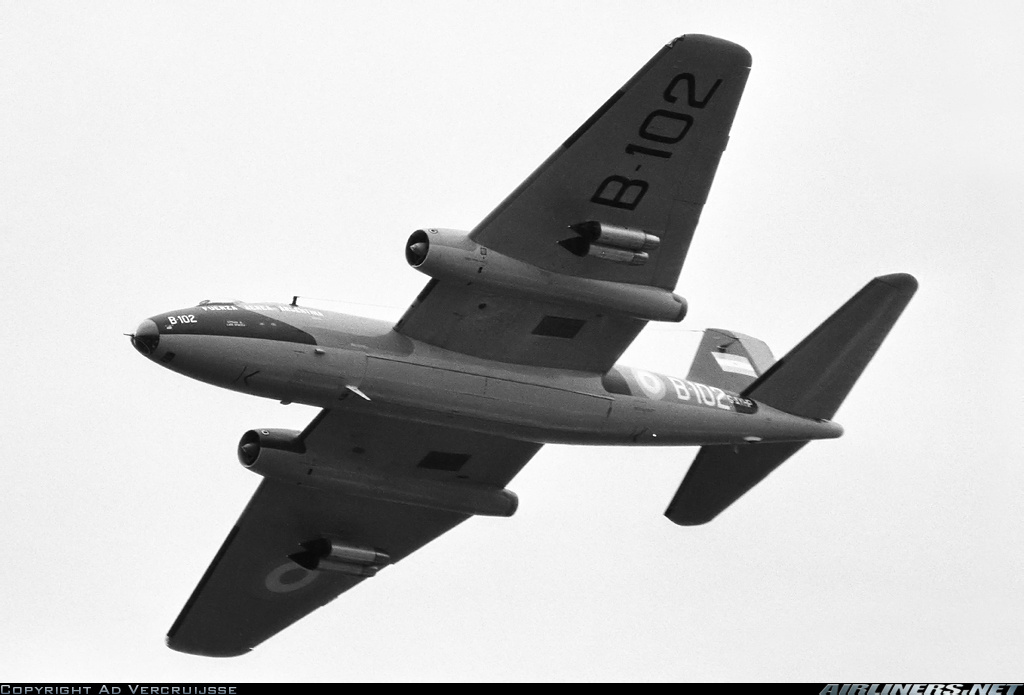
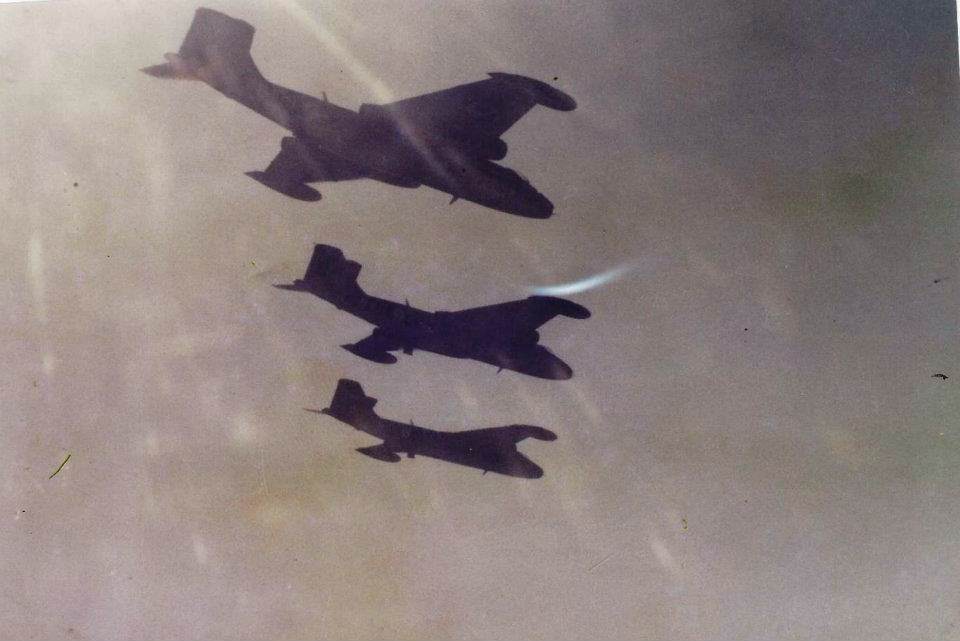

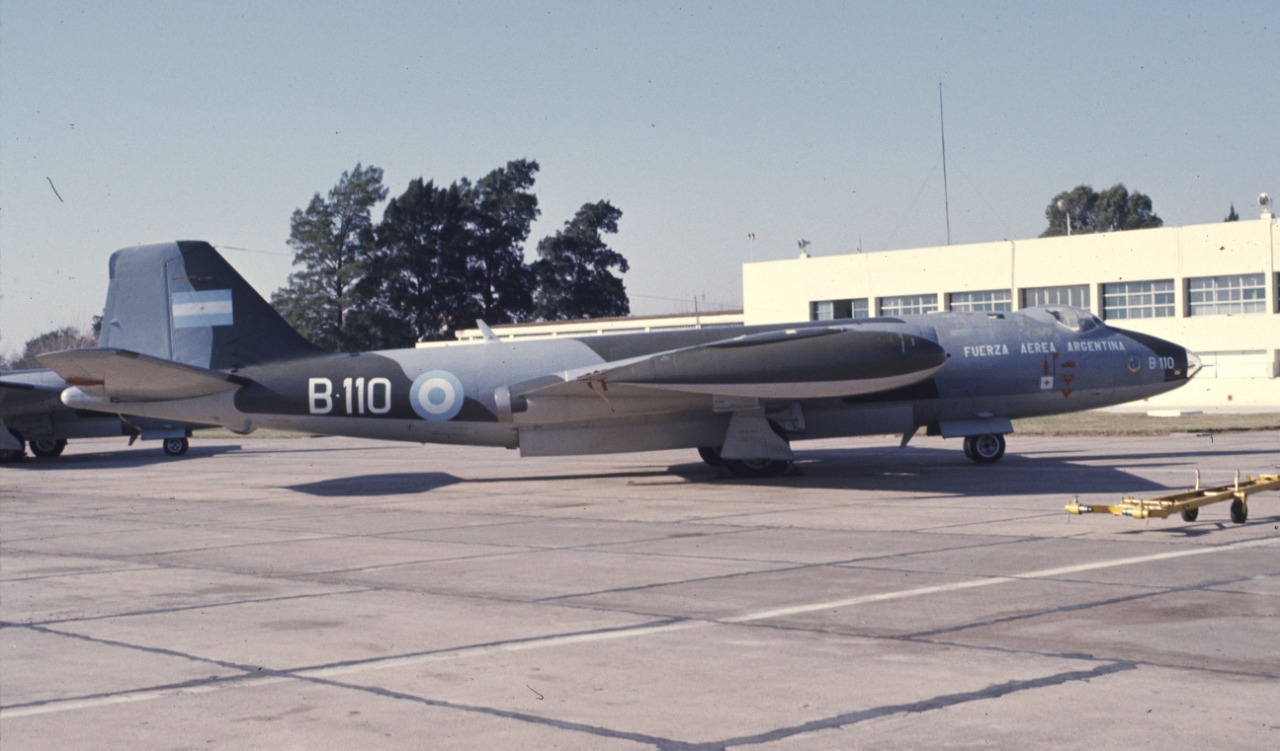

Sources:
Spoiler
https://www.zona-militar.com/tag/canberra-mk-62/
Operaciones Aereas, Escuadron CANBERRA en 1982. | Zona Militar
https://www.amilarg.com.ar/bac-canberra-fa.html
Reseña Histórica Avión BMk-62 CANBERRA B-101 | Escuela de Suboficiales de la Fuerza Aérea
https://www.pucara.org/post/una-máquina-de-hacer-tallarines-malvinera
Rolls-Royce Avon - Wikipedia
Canberra - The operational Record / Robert Jackson
Canberras sobre Malvinas / Roberto Rivollier
Malvinas, la guerra Aerea Tomo 9






































